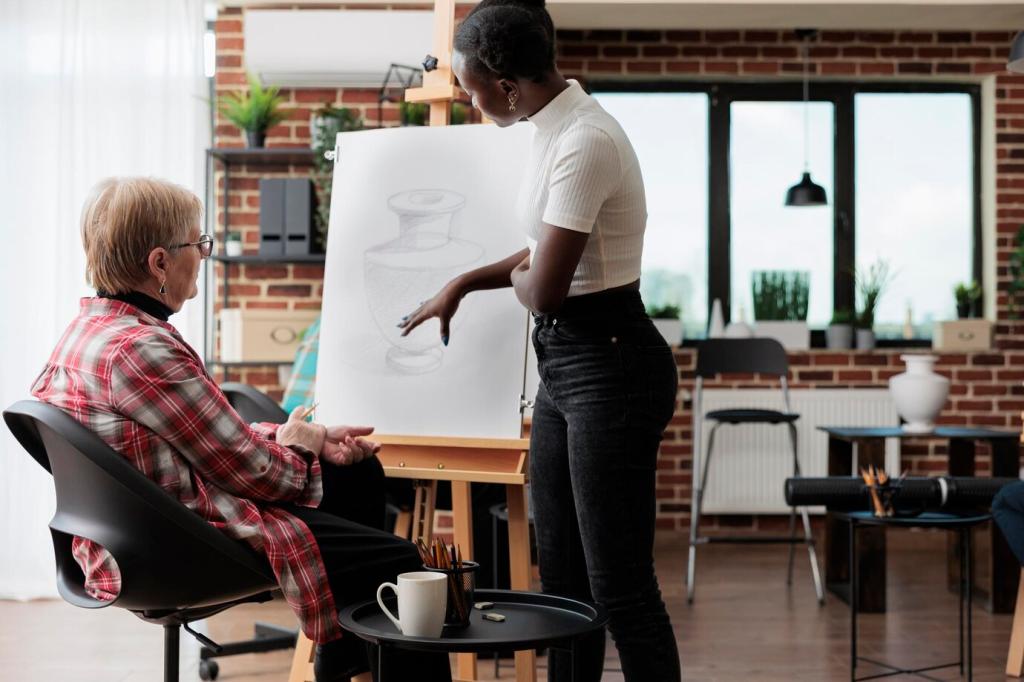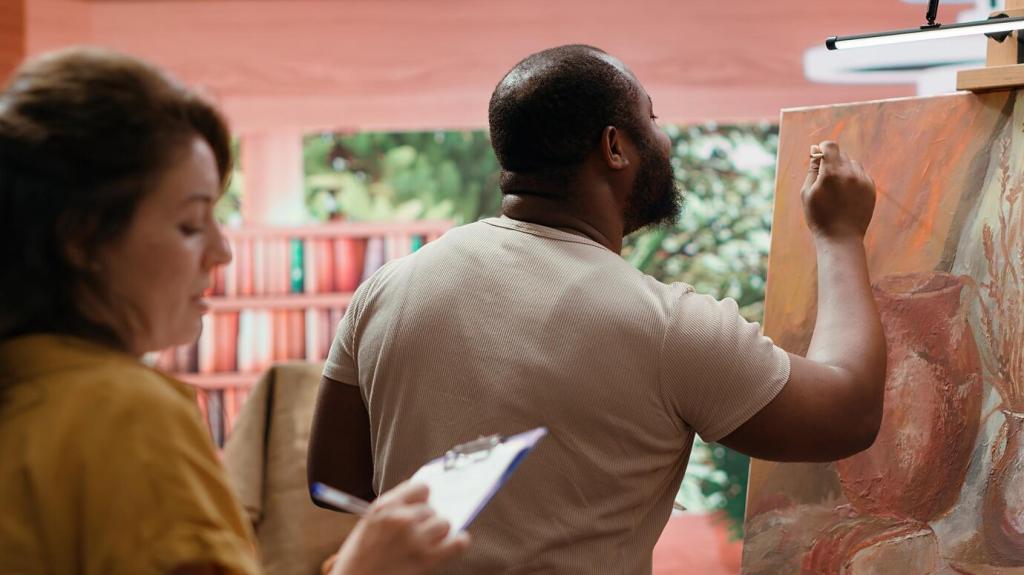Color Theory for Luminous Blends
Each pigment leans warm or cool. Mix warms with warms for bright oranges; pair cools for clean greens. Crossing biases can dull mixtures—use intentionally when you need subdued, elegant neutrals within delicate blends.
Color Theory for Luminous Blends
Opposites on the color wheel neutralize when blended, perfect for soft shadows. Place complements adjacent, then gently mingle to suggest vibration. Reserve tiny untouched accents to keep transitions lively instead of collapsing into gray.
Color Theory for Luminous Blends
Plan three to five value steps before painting. Start light, protect highlights, and descend carefully. When blending, move from light to dark, feeding the bead. This preserves clarity and ensures your transitions read intentionally.






